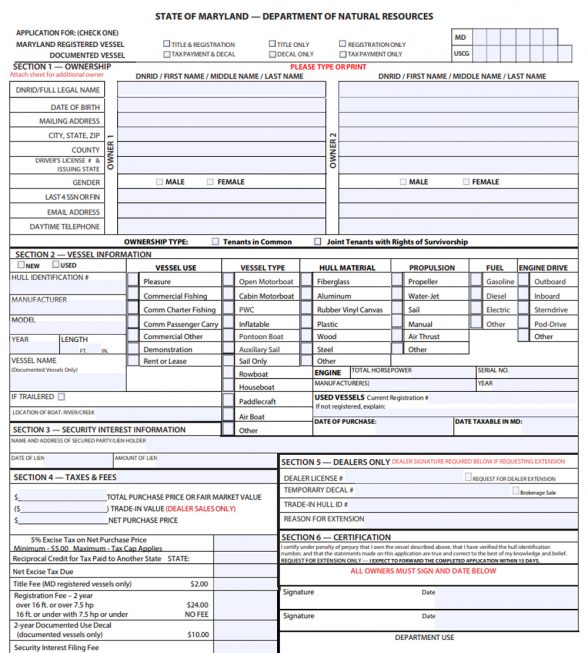- Specific laws for registering your boat vary from state to state.
- In most cases any boat with mechanical propulsion will need to be registered.
- The registration usually must take place in the state where the boat is primarily used, so if you live in one state but do your boating in another, check the local laws carefully to see where the boat needs to be registered.
- To register your boat you’ll need the same type of basic information as needed for registering a car: a bill or sale or proof of purchase (yes, there will probably be taxes due based on purchase price) are almost always necessary.
- When registering your boat, you’ll use the “HIN” (hull identification number) the same way you’d use a car’s VIN number to identify the vehicle.
- If you buy a boat new, the dealership can almost certainly take care of the initial registration for you.
So, you’ve bought a boat. Congratulations! And if you’ve found your way to this page, you probably already know that before you can use that boat, there are a few legal hoops to jump through. Perhaps you’ve already acquired your boating license, chosen a boat, lined up financing and struck a deal with the boat seller. The next step will be registering the boat.

The easiest way to register a boat is, of course, to buy one new at a dealership and let them handle all the paperwork. This is not always an option, though, so let’s go through the process step-by-step. Since each state has its own specific regulations, remember that this will vary a bit.
First, you’ll have to ID the state agency that handles boat registration. This may be the Department of Motor Vehicles, but it can also be the Department of Natural Resources, or a Fisheries and Wildlife Service. In most cases you’ll start with a form (usually, but not always, downloadable online). These forms are quite similar to those used for registering a car. You’ll need to fill out information about yourself, including your address and phone number. Then, you’ll have to fill out information about the boat. This often includes specifications like length overall, weight, primary use, hull construction material, and so on. The vessel’s HIN number is used to identify it, exactly like a car’s VIN number, and will be needed no matter what state you’re registering in.

These forms also track security interest, but to the issuing body, the most important blanks to fill in usually have to do with purchase price and taxation. You’ll need documentation for this, too, usually in the form of a bill of sale. If you bought the boat from a private party, most of these state agencies have a boilerplate bill of sale you can fill out and use to document the purchase.
Finally, you’ll sign and date the form – and of course, probably pay a filing fee, too. This ranges but usually it’s between $25 and $250 (often depending on the boat’s size), and the taxes on the purchase price of the boat are commonly in the five to 10 percent range. When the form’s all filled out and you’re ready to pay whatever fees are necessary, you can bring it to the issuing agency or mail it in.

In some cases if you do it at the state agency office, you’ll get a registration card and sticker on the spot. In other cases, you may have to wait for it to be delivered by mail. Either way, there’s usually a sticker involved, just like a car’s license tags, which has to be renewed annually or biannually.
There’s one big exception to all these rules, and that comes up if you build your own boat. In that case, you obviously won’t have a bill of sale for documentation. In many states, however, you may need to provide proof of purchase of the construction materials. And in others, you may need to supply photographs of the boat from various angles.
Okay: with your boat all registered, have you cleared the last legal hurdle to hitting the lake? Not quite. Before you shove off the dock, make sure to check out this Boat Items Checklist, because there’s some legally-mandated safety gear you must keep aboard plus some common-sense safety items you’ll want to be sure are also on the boat. Check that final box, and you’ll be ready to hit the water and have some fun—lots of fun.



0 Comentarios